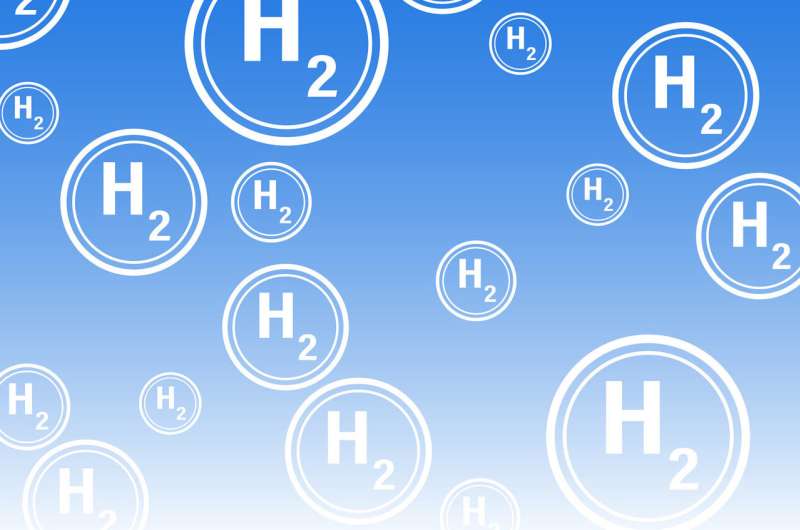Hydrogen production policy critical to net-zero emissions

Hydrogen production should be carefully regulated and consumers informed about emissions credentials if Australia is to achieve a sustainable energy economy and net zero emissions by 2050, QUT experts warn.
Published in Sustainable Energy & Fuels, a QUT analysis shows the differences between hydrogen production based on a generic primary fuel source—coal, natural gas, or renewables—and the resulting carbon dioxide (CO2) that needs to be abated for net zero emissions.
Associate Professor Jonathan Love from the QUT Center for Clean Energy Technology and Practices said the analysis highlighted considerations for future studies, policy deliberation, and consumer regulatory frameworks for clean electricity and transport.
“We need to consider the end-to-end process to produce and use hydrogen if we are to say it’s sustainable and is part of the clean energy transition,” Professor Love said.
“Different fuel cells produce very different outcomes when considering the best use of fuel for sustainability outcomes.
“There is no current policy that links consumer fuel cell technology choices with the primary energy source or emissions, so hydrogen producers could end up making sustainability outcomes worse.
“This highlights the importance of early technology choices in the pathway to a sustainable energy economy, and a disconnect in people’s knowledge of fuel cells in terms of fuel supply for power generation.”
Researchers analyzed the amount of CO2 that would need to be abated for net zero emissions from production and use of blue hydrogen (from steam-reformed natural gas), black or brown hydrogen (from coal-gasification), and green hydrogen generated using renewable energy or low-carbon power.
Professor Love said hydrogen use required fuel cells, which convert chemical energy to electrical energy but can’t store chemical energy like batteries, so need a separate gas tank for fuel.
The low temperature proton-exchange membrane fuel cell (PEMFC), the most common type of fuel cell, is used in electric vehicles such as the Hyundai Nexo and Toyota Mirai.
He said the analysis compared the PEMFC with a high temperature solid oxide fuel cell (SOFC) that can convert not only hydrogen but natural gas, biogas, or any fuel mix.
“The PEMFC can only operate with high purity hydrogen and our analysis shows that its best to only use green hydrogen and not blue hydrogen made from fossil fuels,” Professor Love said.
“The SOFC is the best fuel cell for the fossil fuel industry to pursue as long as they had carbon capture capability, rather than converting natural gas to hydrogen, which actually produces more emissions over the whole process.”
Professor Love said technologies such as SOFC that could use a blend of natural gas and green hydrogen enabled a progressive transition towards more renewable gas supply over time and was one strategy to ensure no unintended lock-in of fossil fuel assets in future decades.
“A sustainable energy economy should be the ultimate objective rather than a hydrogen economy that may entrench unwanted practices with poor sustainability outcomes through unwise use of power generation methods.
“Green hydrogen is the best option that enables the whole process chain to be sustainable.
“Blue hydrogen is unviable in a future sustainable energy economy, even though it is a hot topic as part of the hydrogen energy transition across the EU, Australia and other OECD countries.
“Blue hydrogen might start with natural gas and end with cleaner electricity, but there appears to be no current policy connecting those two endpoints.”
Professor Love said 55% of global hydrogen today was used mainly as a chemical by oil refining and agricultural industries, but the hydrogen industry was transitioning to a much larger scale to include energy applications such as transport and stationary power.
He said current CO2 annual global emissions from fossil fuel-derived hydrogen that had very little carbon capture could increase almost 10 times by 2050 if established practices continued.
Professor Love said the QUT analysis focused on the most beneficial environmental outcomes from hydrogen use in a future sustainable energy economy using CO2 emissions as the most quantifiable measure.
He said future analyses should also focus on economics, greenhouse gas emissions of more concern such as methane and nitrous oxide and the global warming potential and effects of fugitive hydrogen emissions when data on its interactions in the atmosphere become more reliable.
Generating green hydrogen from biomass, an abundant renewable energy source
Jonathan Love et al, Impact of fuel cells on hydrogen energy pathways in a Sustainable Energy Economy, Sustainable Energy & Fuels (2022). DOI: 10.1039/D2SE00923D
Citation:
Hydrogen production policy critical to net-zero emissions (2022, August 1)
retrieved 1 August 2022
from https://techxplore.com/news/2022-08-hydrogen-production-policy-critical-net-zero.html
This document is subject to copyright. Apart from any fair dealing for the purpose of private study or research, no
part may be reproduced without the written permission. The content is provided for information purposes only.
For all the latest Technology News Click Here
For the latest news and updates, follow us on Google News.
